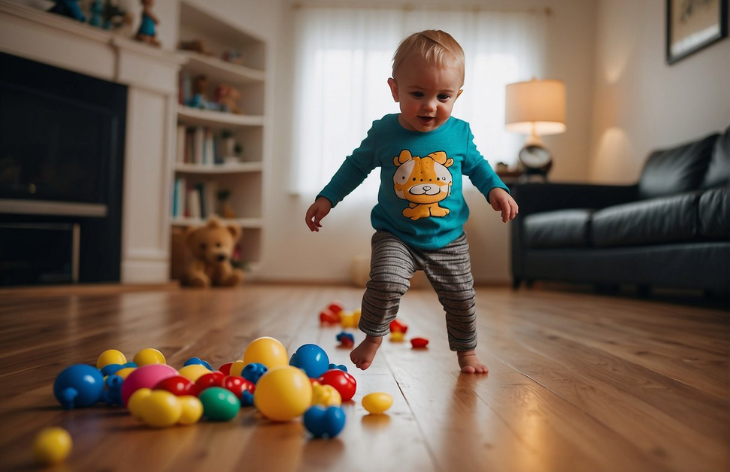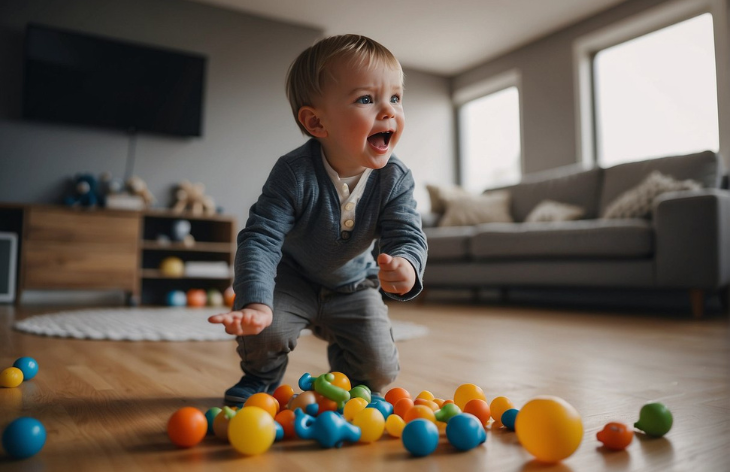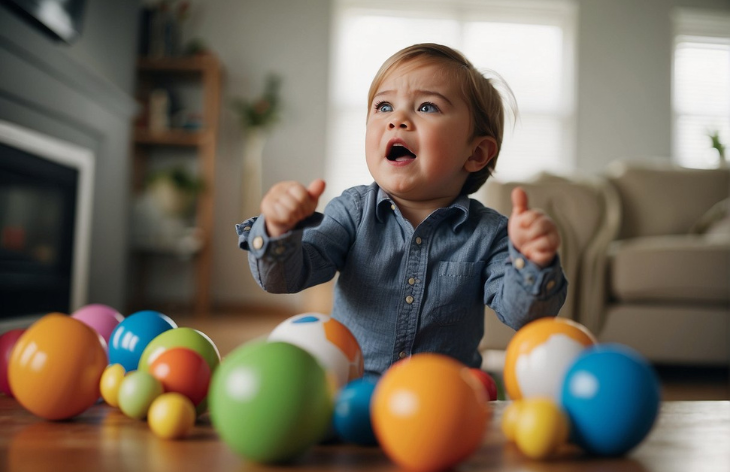When a child acts out after visiting their dad for the weekend, it can be perplexing and concerning. You might wonder why the behavior change occurs and what can be done to support your child.
Could these reactions signal deeper emotional needs or adjustment challenges?
Key Takeaways
- Behavior changes in children post-visit from their dad can indicate underlying emotional turmoil.
- Effective communication strategies are paramount in understanding the child’s perspective.
- Establishing a supportive environment helps children navigate complex family dynamics.
Shannon’s Take
Understanding Child Behavior After Visiting Dad

Changes in your child’s behavior following visitation with their dad can be challenging to navigate. It’s important for you as a mother to understand that such responses may stem from the emotional and psychological impact of transitioning between parents.
Responses to Extreme Emotion and Stressful Transitions
After visiting their dad, your child may display a range of emotional responses – from upset and anger to seeming anxious or agitated, to bad behaviour.
These feelings are often born out of the stressful changes from one parental environment to another.
A child may find it difficult to adjust to different rules or parenting styles, leading to a display of emotions that can be confusing for both you and your child. Consistency and a predictable routine can help mitigate these stress reactions.
Parental Influence and Role of Consistency

Your approach to managing these post-visitation challenges is crucial. As a parent, your reaction to how they behave plays a significant role in how they cope.
If you remain calm and consistent, it can be comforting and reassuring to a child during this anxious time.
Efforts to maintain a stable, secure, and loving environment, where the child knows what to expect, are pivotal.
For instance, establishing a simple post-visitation ritual might provide your child with a sense of security and help them integrate more smoothly.
It’s important to remember that your child looks up to you for guidance and support, especially when they’re struggling to process their feelings after a visit with dad.
Communication Strategies

Effective communication with your child can help manage behavioral issues when they come home after visiting their father. By focusing on openness and understanding, you foster an environment where your child feels safe to express their feelings.
Encouraging Open Dialogue
Start Conversations: Take the initiative to communicate with your child about their experiences. Encourage them to share details by asking open-ended questions, which can provide insights into their feelings and behavior.
- Create a Structure: Set aside a regular time for discussions, ensuring that your child knows they have a consistent opportunity to talk.
- Listen Actively: When your child speaks, listen attentively, and validate their feelings. This shows that you respect their perspective.
Addressing Concerns and Opinions
Understanding Your Child’s Viewpoint: Acknowledge and encourage your child to express their opinion. This can help them feel heard and valued, potentially reducing negative behaviors.
- Provide Reassurance: Remind your child that it’s okay to have mixed emotions and that you’re there to support them.
- Offer Guidance: Help your child develop coping strategies for when they are upset. Reinforce the use of positive communication techniques.
Creating a Supportive Environment

When kids act up after visiting their father, it’s crucial to establish an environment that fosters a sense of security and emotional well-being. Integrating predictable activities and structuring handover processes is key to achieving this stability.
Routine and Structure
Establishing a consistent setting is essential for promoting stability in your child’s life, especially when they’re shifting between two homes. Ensure that you maintain similar rules and schedules at both residences.
This can include consistent meal times, bedtimes, and homework routines.
The familiarity that comes from a predictable routine can combat your child’s anxiety and help them adjust more comfortably after spending time with their dad.
- Meal Times: Aim to serve meals at similar times in both homes.
- Bedtime: Keep a consistent bedtime schedule, including the winding down process.
- Homework: Establish a fixed time and place for completing schoolwork.
Handover Processes and Predictability
Handover processes refer to the times when your child shifts from one parent to the other. It’s crucial to make these exchanges as smooth and predictable as possible.
To reduce stress, set clear boundaries and expectations for what will happen during these transitions.
- Discuss and agree with the other parent on a handover routine that works for both of you.
- Prepare your child in advance for when they’ll be visiting their dad and when would come home.
- Keep the adjustment period calm and supportive, avoiding any conflicts and frustration in front of your child.
Parenting Techniques and Challenges When Your Child Acts Up

When your kid acts up after visiting their dad, it reflects the complexities of managing different parenting approaches and the necessity for clear and consistent discipline. In single-parent situations, or separated parents, maintaining equilibrium in parenting styles and assumptions can be particularly challenging.
Managing Different Parenting Styles
Co-Parenting Harmony: It’s vital for you and your ex-partner in making sure a unified front when it comes to parenting styles to provide stability for your child.
Handling behavior differently can confuse your child, leading to acting out.
Communicate openly to align your parenting techniques, ensuring that both homes follow similar routines and rules to create a sense of normalcy for your child. The benefit of such consistency to get along is a smoother changeover between homes.
- Consistency is Key: Create a consistent environment for your child by agreeing on bedtimes, homework routines, and leisure activities.
- Communication Channels: Set regular times to discuss and adjust parenting strategies as your child grows and their needs change.
Discipline and Setting Expectations
Clear Expectations: Setting clear, age-appropriate expectations for behavior is essential in disciplining any child, especially in situations involving separation or divorce.
Be sure to articulate the consequences of misbehavior, and follow through on them with fairness and love.
- Consistent Discipline: Whether a single parent or co-parenting, applying consistent discipline helps your child understand the repercussions of their actions.
- Positive Reinforcement: Catch your child doing good, and be sure to acknowledge and reward it, which is the fastest way to reinforce the behavior you want to see more often.
Transition Tools and Resources

When navigating the dynamics of transitioning between parents after visitation, you’ll want to create ways to have effective tools and resources that can significantly ease the process. The use of a structured handover book and accessing professional support services are key strategies to consider.
Using a Handover Book
A handover book is a practical tool that can be used to make the transition smoother for your child. In this book, you and the other parent can capture important information about your child’s routine, any emotional challenges they may have faced, and positive experiences they’ve enjoyed.
This level of communication ensures that both of you are informed and can provide consistent care, helping to stabilize your child’s experience during custody changes.
Professional Support Services
If your child consistently acts up after visiting their dad, seeking out professional support services may be necessary.
Charities and local support groups can connect you with experienced social workers or counselors who specialize in family transitions. These professionals can work with you and your child to identify the causes of distress and develop strategies to address them, contributing to a more positive transition experience.
Frequently Asked Questions

In this section, you will find targeted answers to common concerns regarding post-visitation behavior in children.
How can a parent address a child crying after returning from visitation with your ex?
When your child cries after coming back from visitation, it’s essential to provide comfort without pressing for details. Establish a calming routine and ensure they feel safe to express their emotions. Active listening and a consistent environment can help alleviate their distress.
What does the ‘Disney Dad’ phenomenon refer to, and how can it impact a child?
The term ‘Disney Dad’ refers to a non-custodial parent who focuses on fun, high-energy activities during visits, ignoring routine and discipline. This can lead to unrealistic expectations and difficulties adjusting to regular life post-visitation.
Are there common behavioral issues observed in toddlers after visitation with a non-custodial parent?
Yes, toddlers often exhibit behavioral changes such as clinginess, tantrums, or regression in milestones after visitation. These reactions stem from the transitions and inconsistencies in parenting styles between their two homes.
What strategies can help when a child shows ‘Jekyll and Hyde’ behavioral changes around different parents?
To manage these behavioral changes, consistent discipline and communication between parents are key.
Encourage openness and stability by setting expectations and maintaining routines for your child across both households.

